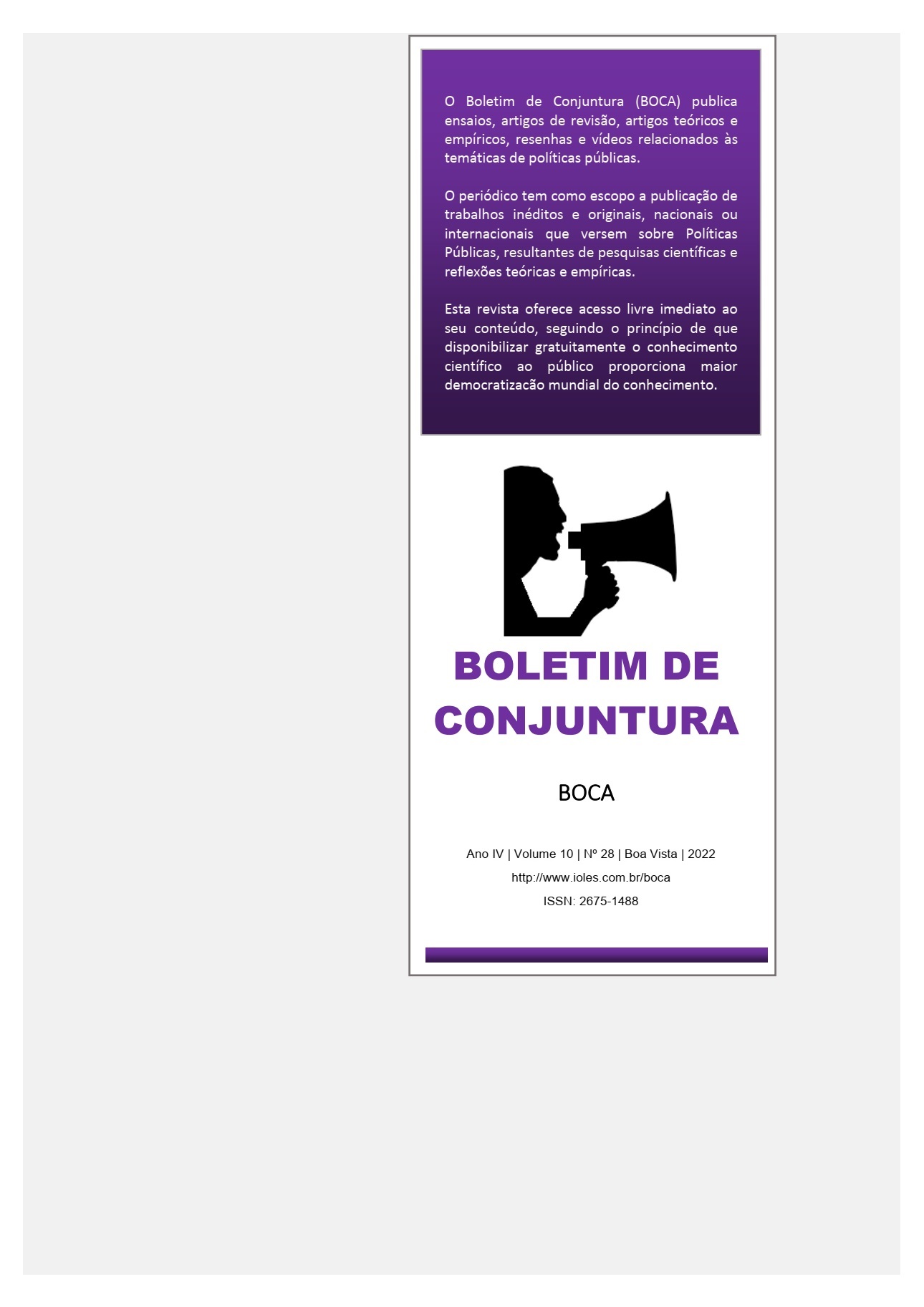CULTURAL TOURISM IN RORAIMA: TUARÎ-YAMARÎ (THE SLAVE WAY) IN LOW MAÚ RIVER
Main Article Content
Abstract
The present research focus on the theme of the historical and geographic process of the occupation and expansion of the Rio Branco region in the state of Roraima. The article seeks to reflect on the route to the El Dorado that several colonists have traced in the search of the golden imaginary that covered the golden city delving into the historical, geographical and cultural context of the Lower Maú River along the Taurî-yamarî path (The slaves' path) through the channel known as Igarapé do Pirara. The general objective starts from a search through the bibliographic review in order to advance on the geographic and historical aspects of the Taurî-yamarî path (The slaves' path) in the Lower Maú River that establishes a historical route to El Dorado. The research methodology starts from a bibliographic review characterized as descriptive and explanatory, as well as making use of content analysis and a participatory field research. In this way, the research shows that the Pirara Channel corresponds to the route of the legendary and imaginary El Dorado. The El Dorado route can be an important element for the Cultural Tourism of Roraima aiming at the cultural and historical rescue as well as the preservation of the environment that surrounds the Pirara Channel. With the possibility of presenting a technical and descriptive route of the Pirara Channel, this research evidences the need for establishing a tourist itinerary within the region in a planned and sustainable way preserving the natural aspects and retelling the history of the legendary El Dorado.
Article Details

This work is licensed under a Creative Commons Attribution 4.0 International License.
Copyright (c). Conjuncture Bulletin (BOCA)
This work is licensed under a Creative Commons Attribution 4.0 International License.
References
ANDRADE, J. V. Turismo – Fundamentos e Dimensões. São Paulo: Editora Ática, 2004.
APPADURAI, A. “Disjunctive and difference in the global cultural economy”. In: FEATHERSTONE, M. (ed.). Global Culture: Nationalism, Globalization and Modernity. London: Sage, 1990.
BARDIN, L. Análise de conteúdo. São Paulo: Editora Edições 70, 2011.
BARRETO, M. Turismo e legado cultural: as possibilidades de planejamento. Campinas: Editora Papiros, 2000.
BRASIL. Ministério do Turismo. Turismo cultural: orientações básicas. Brasília: Ministério do Turismo, 2008.
CAMILO, J. “Em busca do País das Amazonas: o mito, o mapa, a fronteira”. Anais do I Simpósio Brasileiro de Cartografia Histórica: Passado Presente nos Velhos Mapas. Conhecimento e Poder. Paraty: UFMG, 2011.
CARVAJAL, G.; ROJAS, A.; ACUÑA, C. Descobrimentos do rio das Amazonas. São Paulo: Companhia Editora Nacional, 1941.
CARVAJAL, J. E. La cara oculta del viajero - Reflexiones sobre antropología y turismo. Buenos Aires: Biblos, 1992.
FARAGE, N. “O curso pretende traçar um panorama da produção em história indígena sul-americana nas duas últimas décadas, com ênfase para a análise de movimentos insurgentes”. In: ALBERT, B.; RAMOS, A. (orgs.). Pacificando o Branco: cosmologias do contato no norte-amazônico. São Paulo: EdUnesp, 2002.
FARAGE, N. As muralhas dos sertões: os povos indígenas no rio Branco e a colonização. Rio de Janeiro: Editora Paz e Terra / ANPOCS, 1991.
GIL, A. C. Métodos e Técnicas de Pesquisa Social. São Paulo: Editora Atlas, 2008.
HULSMAN, L. Brazilian Indians in the Dutch Republic: The remonstrances of Antonio Paraupabato the States General in 1654 and 1665. Amsterdam, 2005.
IPHAN - Instituto do Patrimônio Histórico e Artístico Nacional. Educação Patrimonial: mais educação. Brasília: IPHAN/MEC, 2006.
MARCONI, M. A.; LAKATOS, E. M. Metodologia Científica. São Paulo: Editora Atlas, 2011.
MTUR. Ministério do Turismo. Segmentação do Turismo: Experiências, Tendências e Inovações - Artigos Acadêmicos. Brasília: Ministério do Turismo, 2010.
SAN MARTIN, W. R. O Caminho do Eldorado (The Discoveries of the Large, Rich and Bewtiful Empyre of Guiana, 1595), adaptação e notas. Porto Alegre: Editora Artes e Ofício, 2002.
SANTANA, Natali Conceição. A importância da Praça dos Milagres e do Festejo de Nossa Senhora do Livramento como patrimônio cultural para o município de Caracaraí-RR (Trabalho de Conclusão de Curso de Graduação em Bacharelado em Turismo). Caracaraí: UERR, 2015.
SMITH, A. Os conquistadores do Amazonas: quatro séculos de exploração e aventura no maior rio do mundo. São Paulo: Editora Best Seller, 1990.
SOUZA, M. A. M. O Vale do Rio Branco: Trajetória de Nicolas Horstman e região de construção da ocupação portuguesa através de Lobo D’Almada (Trabalho de Conclusão de Curso de Especialização em História Regional). Boa Vista: UFRR, 2007.
TRIBE, J. “The indiscipline of Tourism”. Annals of Tourism Research, n. 24, 1997.


